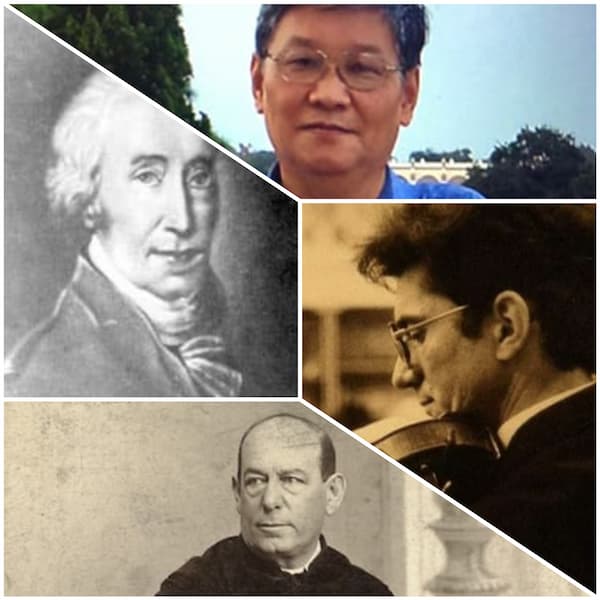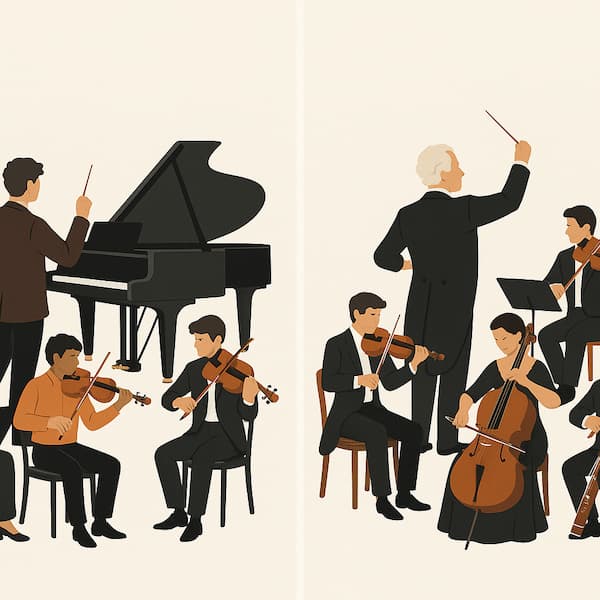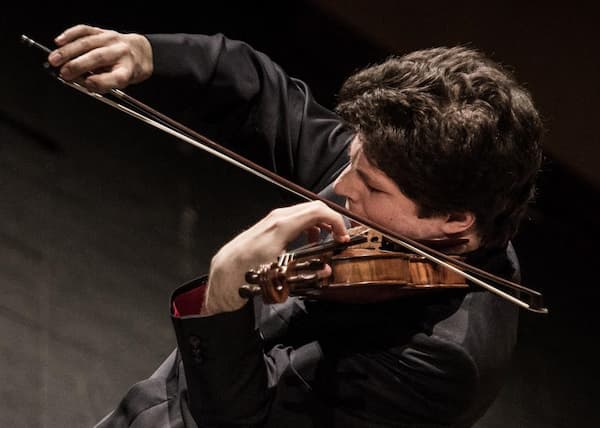Lutenist and theorbist Thomas Dunford has brought a new life to music that seems to have had its best exposure about 20 years ago. His skill on these two Renaissance instruments brings back many pieces of music we’d heard long ago and forgotten. He also is making arrangements of pieces that were never intended for performance on those instruments and making us hear them in a new way.
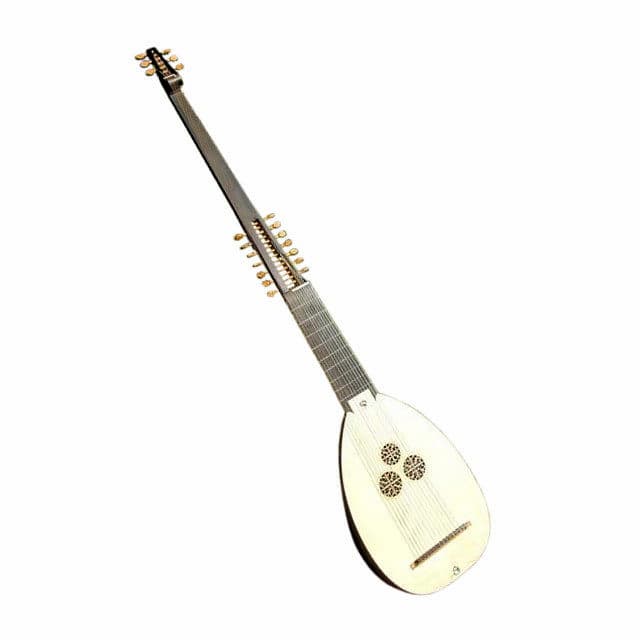
Theorbo
The theorbo is a kind of double lute. In addition to the regular lute strings, a second set of bass strings is attached to an extended neck and second pegbox. In addition to playing regular lute music, the theorbist can also play the lower-register notes to provide a bassline, thus being able to function not only as a melody but also as a basso continuo instrument.
One work is Satie’s familiar Gymnopédies. The title comes from the Spartan festival of gymnopaedia for young men dancing in the nude. A later music dictionary transferred to be a nude dance performed by young women and this seems to be what Satie used for his inspiration.
Heard on piano, the pieces are sparse and spare, understated as is so much of Satie’s work.
Erik Satie: 3 Gymnopédies – No. 1. Lent et douloureux (Giacomo Scinardo, piano)
French lutenist Thomas Dunford arranged Satie’s work for the theorbo, and it takes on a different feeling. The resonance of the theorbo gives a different set of overtones that sound with the melody, and its low dynamic cannot be matched by a piano.
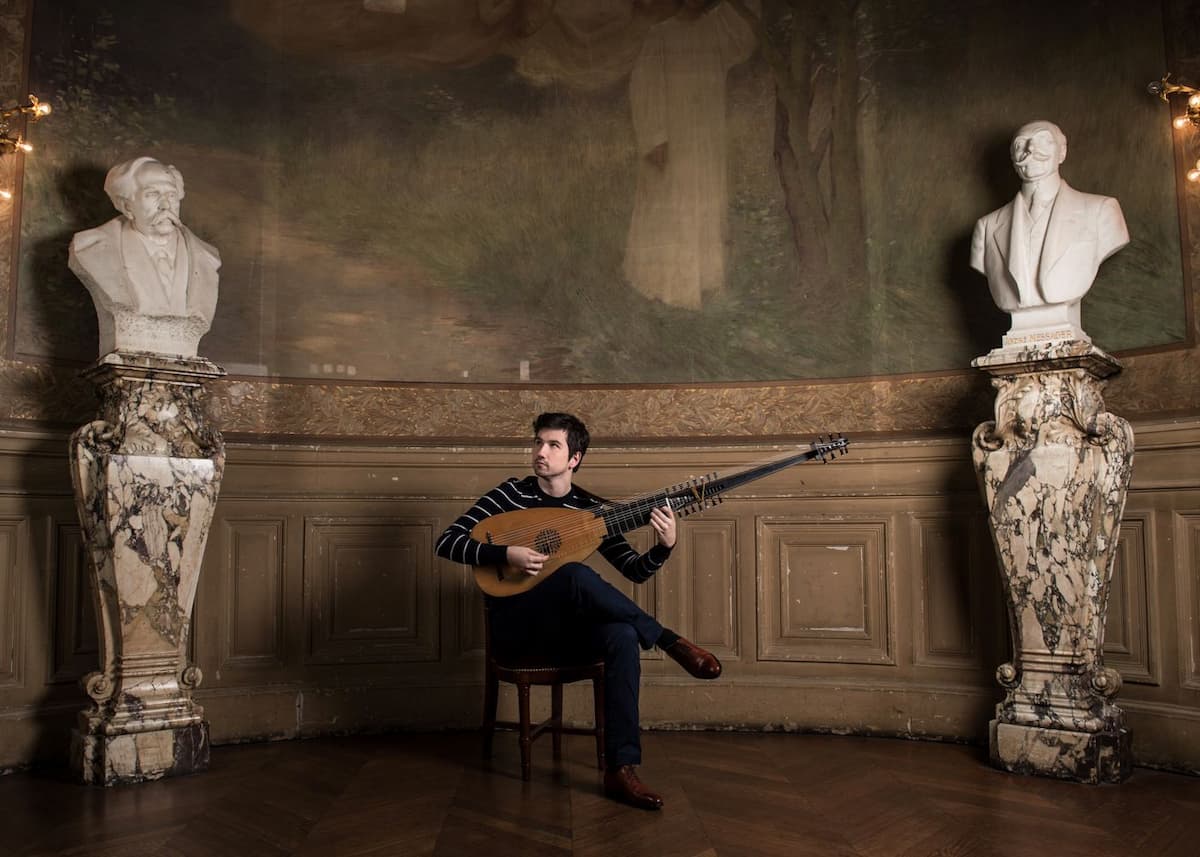
Julien Benhamou: Thomas Dunford with theorbo
Erik Satie: 3 Gymnopédies – No. 1. Lent et douloureux (arr. T. Dunford for theorbo) (Thomas Dunford, theorbo)
Another Satie piece arranged by Dunford was one of the Gnossiennes. Before Satie, the word ‘gnossienne’ was the name of the dance done by Theseus to celebrate his victory at the Minoan Palace at Knossos, Crete, over the Minotaur. Satie’s Gnossiennes do not carry the feeling of dance; they lack time signatures and bar lines, flowing freely across the age, with phrase markings of irregular length to help orient the player but providing little help to a dancer.
Erik Satie: 3 Gnossiennes – Gnossienne No. 1 (arr. T. Dunford for theorbo) (Thomas Dunford, theorbo)
‘Updating’ music of the late 19th century with an instrument of the 17th century is an interesting idea in transcription. It’s not only the overtones of the instrument that are added to the music, but the idea of the instrument itself, developed for use accompanying that new genre, opera.
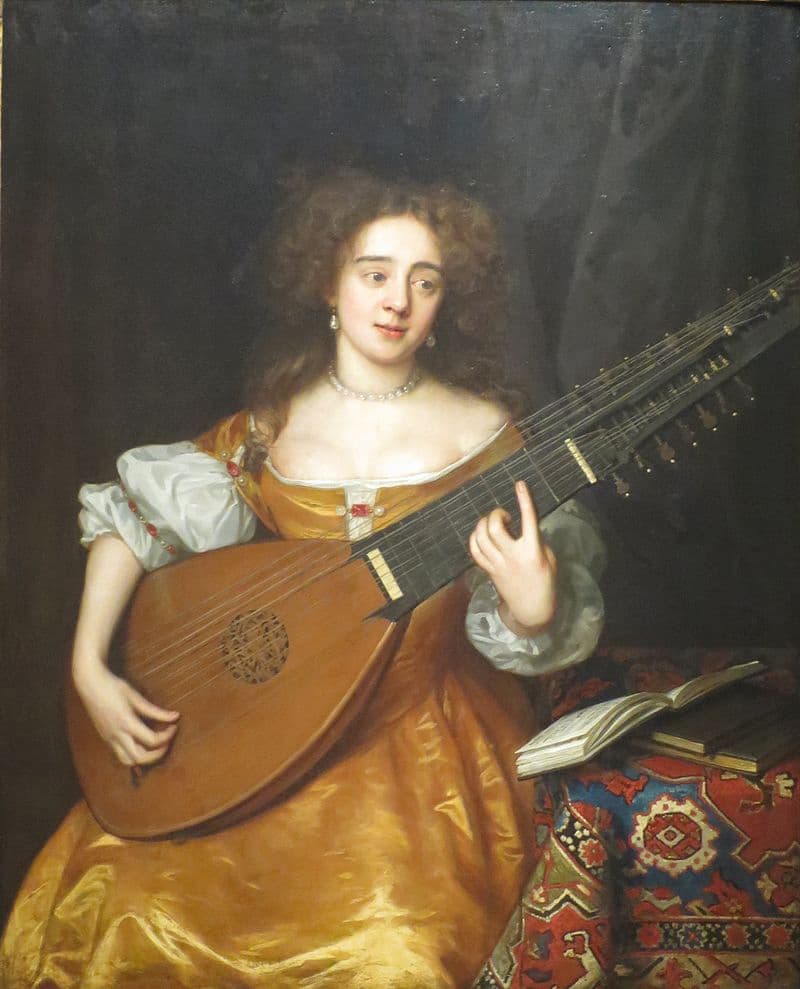
John Michael Wright: Woman with theorbo, ca 1670
The theorbo replaced, in one instrument, the earlier developed bass lutes. The tonal clarity was improved when the theorbo took over the bass functions, and it was easier for one player to control the harmonic progression between the two halves of the instrument.
For more of the best in classical music, sign up for our E-Newsletter

